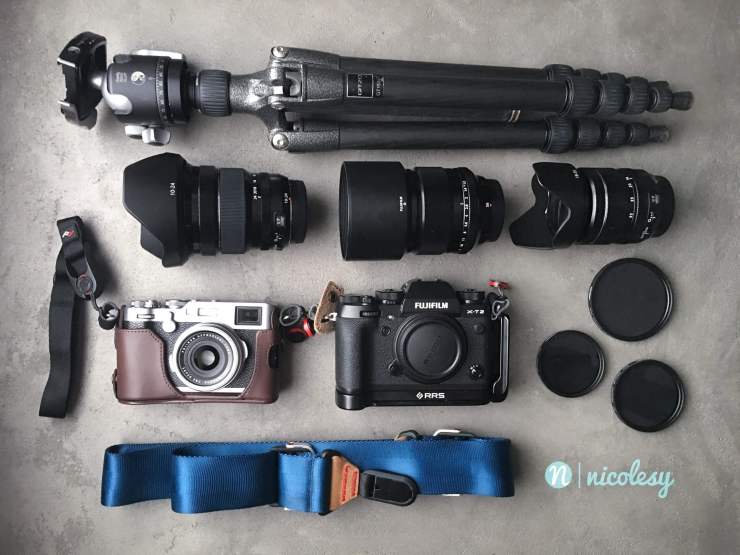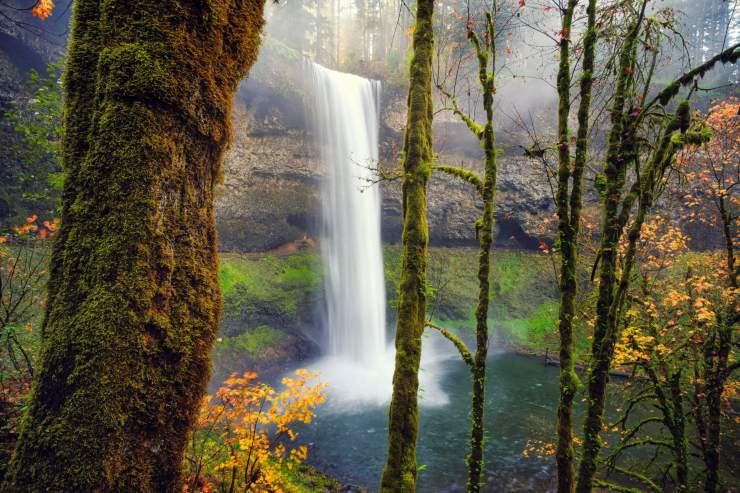When learning a new craft, mistakes are how you learn. But sometimes it’s nice to have insight on these photography mistakes so you can avoid them (or at least can keep them in mind when ignoring them intentionally).
Whether you are a beginner photographer or have been doing this for some time, I listed out five mistakes below from my own experiences to try and help you avoid any struggles with your journey.
1. Buying too much stuff
One of the fun parts about being a photographer is all the gear we can use to create our photographs. In fact, that is sometimes a lure for people who do enjoy technology to acquire equipment to add to their collection. And the temptation to get another accessory, a new light or even a lens can be strong, especially when you are sold a huge promise on what it can do for your photography.
Unfortunately, adding too many items to your collection can sometimes just add to the storage space in your home. I still have items I purchased in my early days of doing stock photography that sits unused in my garage. It’s even difficult to get rid of things because there’s that fear of maybe you just might need it one day! Plus, the last thing you want to do is overspend or go into debt buying loads of photography gear, especially if photography is a hobby and you do not earn an income with it.
The solution — and it is not always an easy one — is to master what you have before going out and purchasing something new. If you want to do macro photography, try flipping your lens around to see what you can get with that method (this video I found on YouTube demonstrates this technique). Afterward, if you discover that you do want to focus a lot of your photography on macro images, then you’ll know it’s time to purchase a true macro lens.
Or, if you think you want to purchase a new lens but are not 100% certain, try renting it first to see how you like it. It’s always best to try other methods out before reverting to all-out purchasing something, and then when you do add items to your collection, you’ll have more confidence that it was the correct move.
Keeping your gear and props minimized will prevent you from the BIG photography mistake of having too much to work with, especially when you are a beginner.
2. Not checking your focus
Have you ever created a seemingly gorgeous shot in camera, only to discover that it was out of focus when viewing it on your computer? The tiny screen on your camera can make many out-of-focus images appear in focus, so it’s an easy one to miss. Trust me, I’ve had this happen to me on multiple occasions!
Nearly all cameras have the ability to zoom in on the camera to preview your shot. While we don’t want to be previewing photos on the back of our cameras (when we would rather be looking through the viewfinder to create new ones), taking a few moments to peek at the photo and zoom in can save you from a ruined shot.
Here are some ways you can ensure clearer focus in the camera:
- Use focus peaking: This will show you a colored highlight over the areas that are in focus.
- Zoom in to focus: Most cameras allow you the ability to zoom in to an area and then set your focus. This works best on a tripod (where the subject nor the camera will move).
- Use a tripod: If you are photographing something that is not moving, try using a tripod. This will make it easier to ensure the focus stays where it is supposed to.
- Try different focus modes: In your camera, try exploring the different focus settings. For example, when I photograph birds, I get much better odds of getting an in-focus shot when I use the Zone setting combined with one of the continuous focus modes.
3. Packing too much gear

I once heard a story about a photographer who went on an uphill hike in the Columbia River Gorge with a huge backpack filled with heavy equipment when the photographer was not in good physical shape to haul his gear on his own. He took way too many items, which bogged him down and likely made the journey less enjoyable. If I recall correctly, the photographer had to hand over his backpack to another (more physically capable) person he was on the hike with. Talk about entitlement!
One reason I switched to Fujifilm cameras is that I want to have smaller, lighter equipment. When I go on hikes I end up taking fewer items almost every time. Instead of bringing lenses for every possible thing I might see when I’m hiking, I’ll take only one or two lenses, and sometimes I even leave the tripod at home.
I never expect anyone else to carry my camera bag, and so because of that I’m more likely to carry fewer items and have a lighter pack. Then, I will focus my photography on what lenses I brought, such as macro, long-distance, etc. Sometimes limiting your gear can actually result in beautiful and unexpected photographs.
The same goes for traveling or doing any type of on-location photography. I’ve had trips where I hauled too much stuff around and regretted it, but now I do my research to determine what gear is absolutely necessary and then maybe will add a few things on top of that. But the fewer items I pack, the happier I am!
I no longer have FOMO (Fear Of Missing Out) if I see something that I could have photographed IF ONLY I had a fill-in-the-blank lens or accessory. And it’s a much more pleasurable experience to NOT feel like I am carrying a bag of bricks around when traveling or hiking.
4. Relying heavily on post-processing
If you use a digital camera, odds are you use some kind of post-processing software to edit your photos, especially if you shoot in raw. But when fixing something in post-processing is something that you rely upon, you might want to reexamine your methods.
I would never say that you shouldn’t photograph something with the intention of making edits to it afterward. I do this all of the time! Whether it’s creating a double-exposure image in Photoshop, intentionally adding a new sky in LuminarAI or even something as simple as converting a photo to black and white, there is a time and place for using software to the extreme to manipulate your images. After all, a RAW photo properly processed in photography software will almost always come out looking better than it started.
The problem (and thus another photography mistake) is when you see something in your shot that could be fixed right then and there, and instead, you think to yourself, “I’ll fix it when I edit the photo.” Maybe it’s a portrait and a person’s hair needs a quick brush through it to make it smooth, an easy-to-remove object that would not be harmed by placing it outside your shot, or bad lighting conditions.
If it’s something you can change or fix before you press the shutter, take the extra few seconds to make it look better and you will be much happier when you are editing your photos later on.
5. Only photographing what is in your “niche”

When I was doing stock photography, I found myself very focused on setting up photoshoots to create lifestyle images of people or food (the two types of images I created most when I started out).
During this time period, I lived in two of the most beautiful states in the US: Hawaii and Utah. I was still honing my photography skills at that time, but I oftentimes look back and wish that I had an inkling of wanting to do landscape photography. In my mind, landscape photos were not nearly as “sellable” as stock photographs, compared to images of people and food.
So I tended to gravitate toward what I thought would make money, which there is absolutely nothing wrong with since we all need to earn a living! But I missed out on many opportunities to create beautiful evergreen images and made a HUGE photography mistake because of my stubbornness.
I now live in Oregon and I chose this as my home primarily because of the beautiful natural wonders this state offers. I love photographing landscapes, nature and just about anything I can get in front of my camera.
My photography business has changed, and while I still build a stock photography portfolio, I also teach and create presets and textures for my online store. I also enjoy giving myself challenges, such as learning how to create waterdrop photographs, or using my iPhone when I find myself without a camera. Doing this has helped me discover even more genres of photography that I can enjoy, and has ultimately redirected certain parts of my life for the better.
Tell your story with the second annual Visual Storytelling Conference!
Experience four days of interactive, online training sessions featuring a range of educational content with experienced photographers and content creators. This free event kicks off with a series of technical boot camps to build essential skills, followed by live, online sessions on photography, video, business and social media. Join live from March 10-13, 2022!
